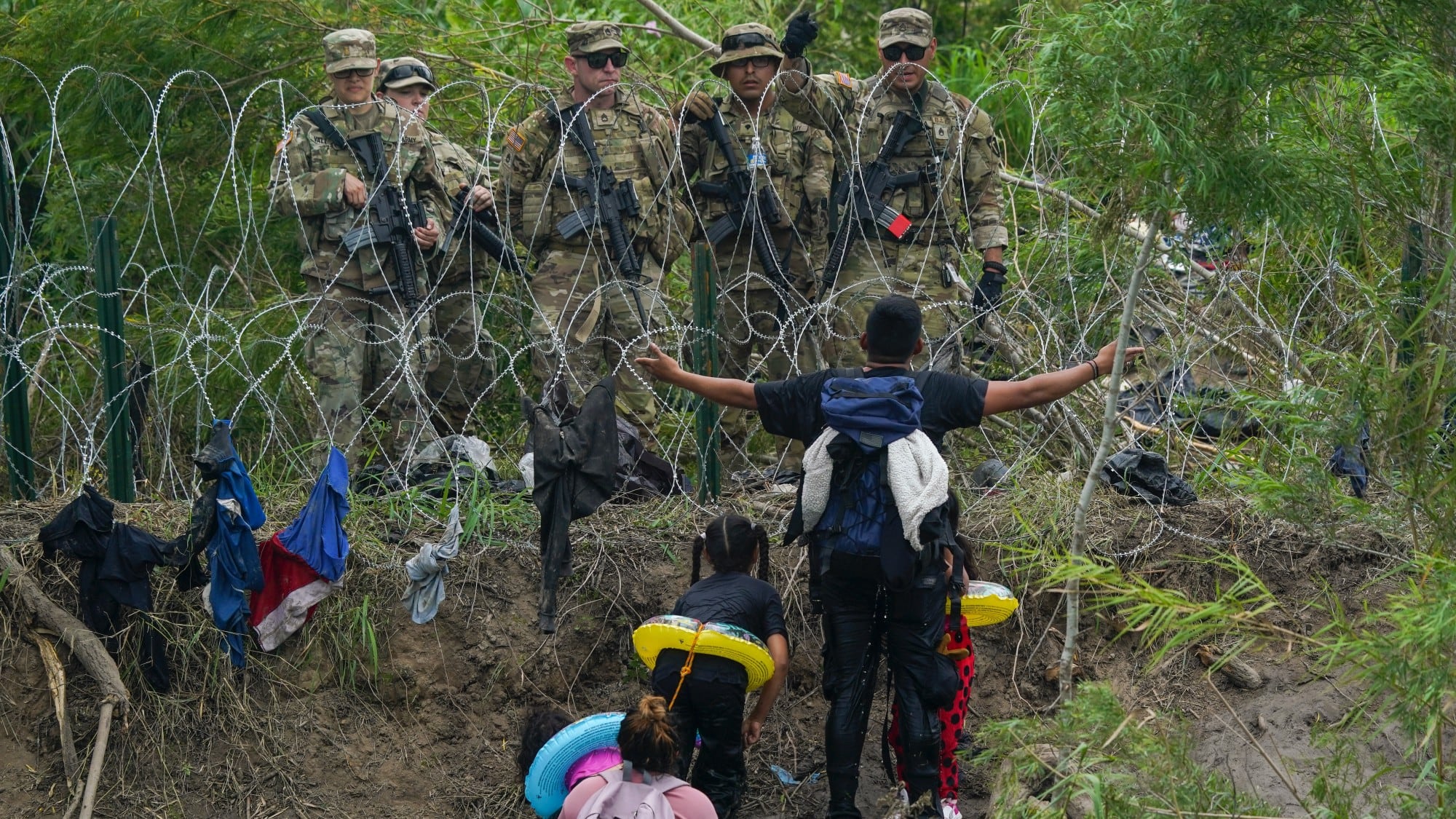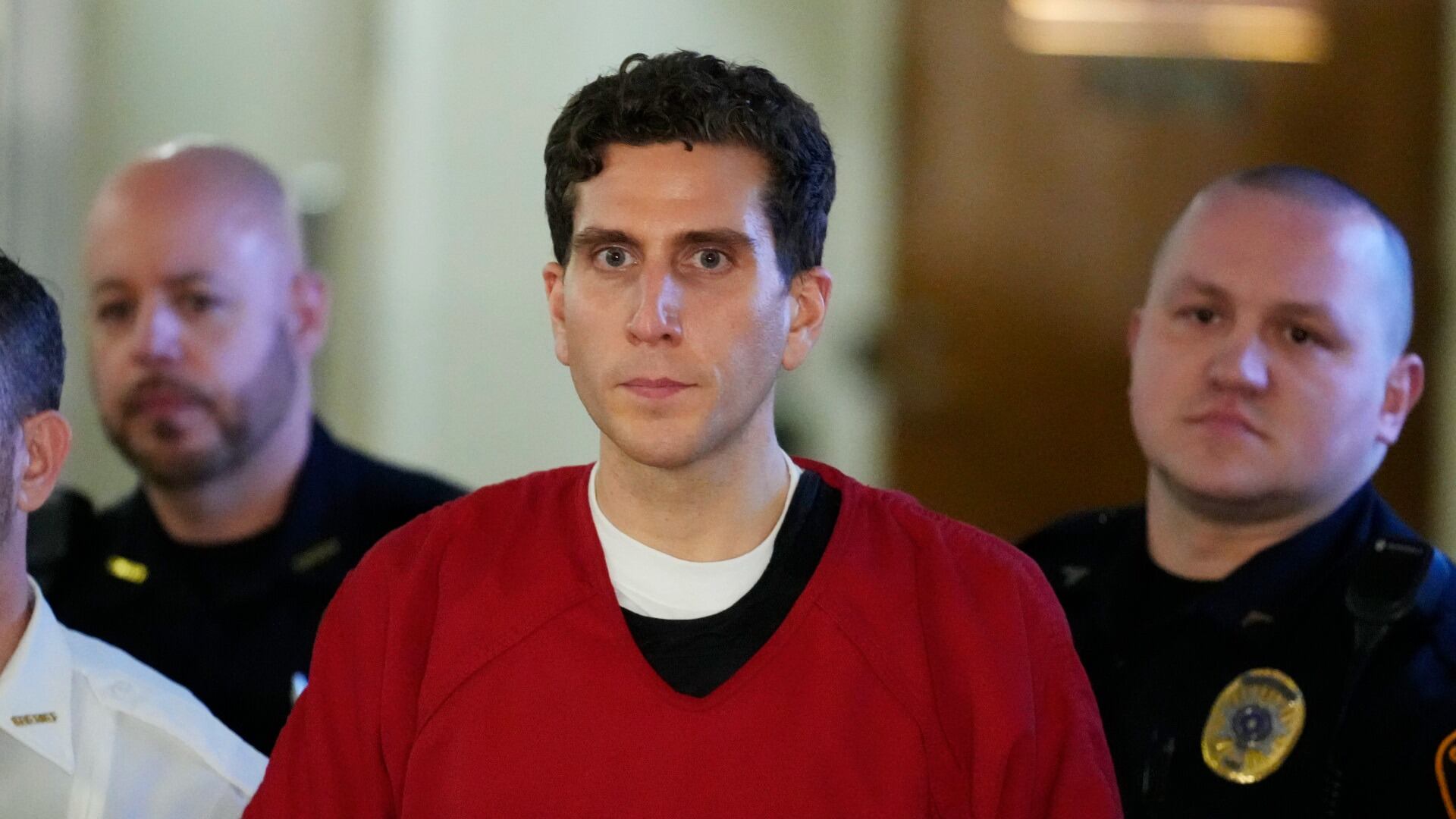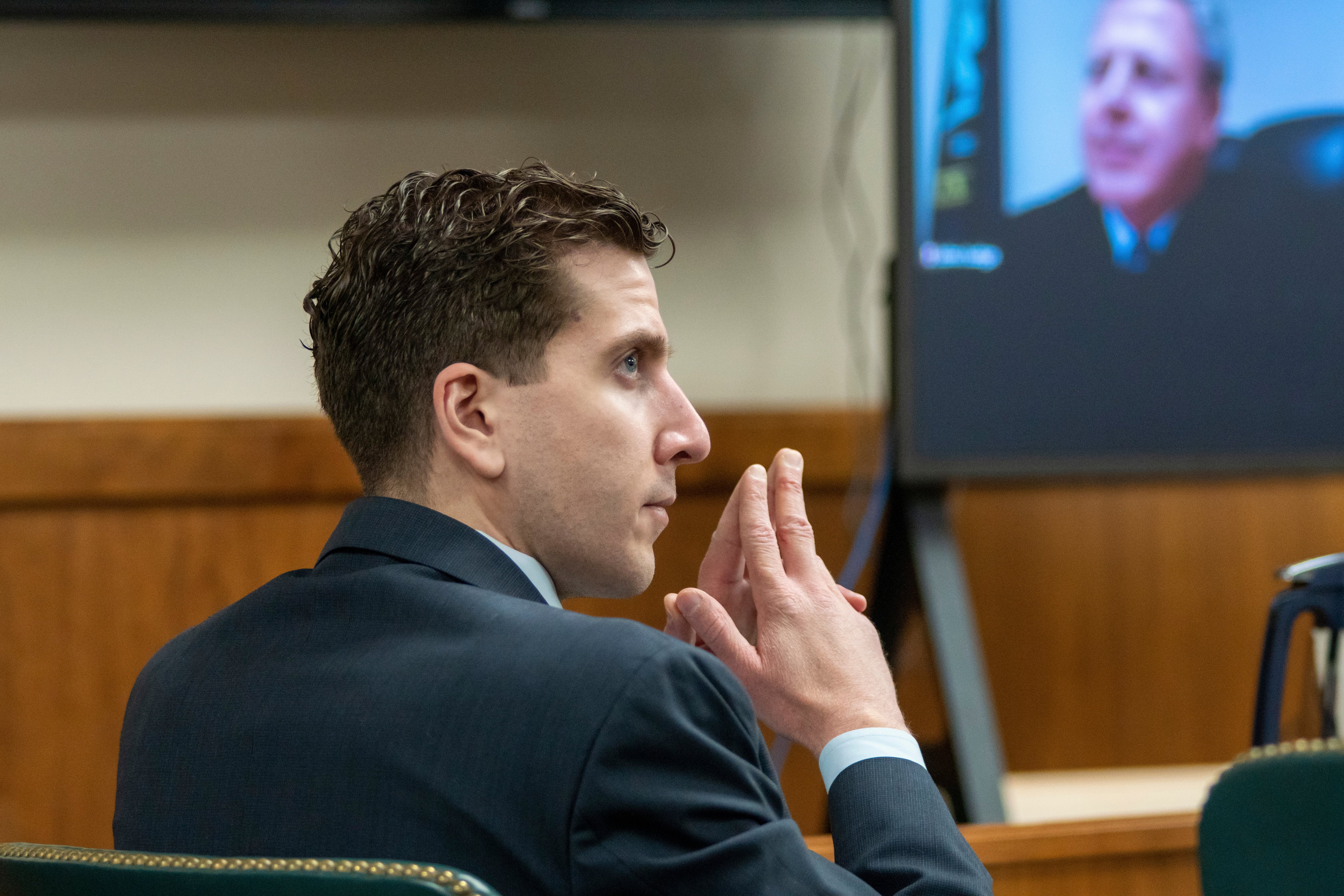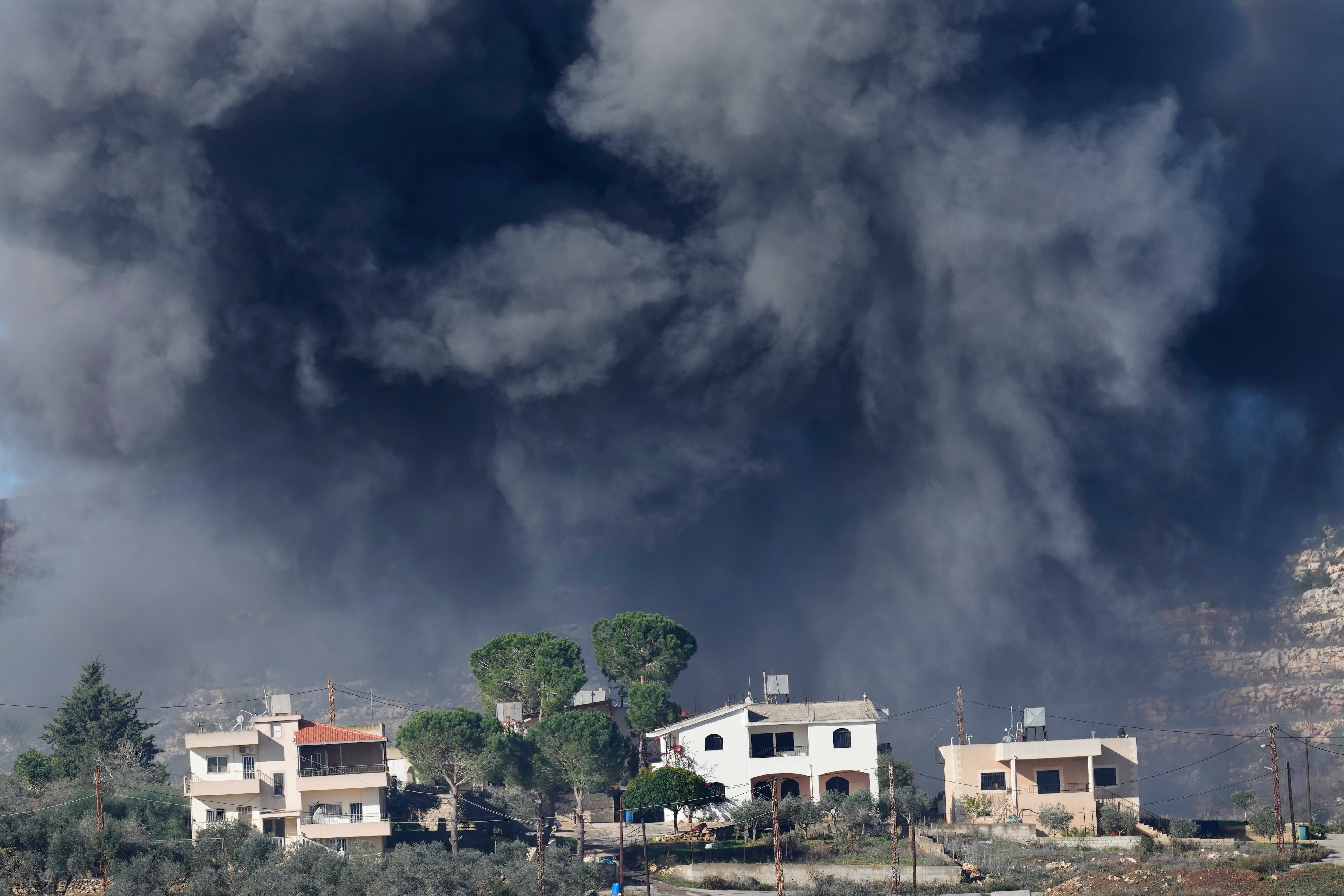By Valerie Gonzalez, Elliot Spagat and Giovanna Dell-Orto
As pandemic-era asylum restrictions ended early Friday, migrants in northern Mexico faced more uncertainties about a new online system for appointments to seek asylum in the U.S. Some migrants still waded apprehensively into the Rio Grande, defying officials who shouted for them to turn back, while elsewhere along the U.S.-Mexico border people hunched over cell phones trying to access an appointment app that may change their future.
President Joe Biden’s administration introduced the new asylum rules in a bid to get asylum-seekers to stop coming across the border illegally by reviving and sharpening pre-pandemic penalties and creating new legal pathways to asylum that aim to cut out unscrupulous smugglers.
The transition to the new system unfolded in the night amid legal challenges and last-ditch efforts by migrants to cross a border fortified with barbed wire and troops.
A federal judge in Florida dealt a potentially serious legal setback to the plan by temporarily blocking the administration’s attempt to release migrants more quickly when Border Patrol holding stations are full.
At Matamoros, across the Rio Grande from Brownsville, Texas, migrant families — with some parents holding children — hesitated only briefly as the deadline passed before entering the waters of the Rio Grande from Mexico, clutching cell phones above the water to light the way toward the U.S.
U.S. authorities shouted for the migrants to turn back.
“Be careful with the children,” an official shouted through a megaphone. “It is especially dangerous for the children.”
Separately, at an outdoor encampment of migrants beside a border bridge in Ciudad Juárez, across from El Paso, Texas, cell phones were alight as migrants attempted to book an asylum appointment online through an app administered by U.S. Customs and Border Protection.
“There’s no other way to get in,” said Venezuelan Carolina Ortiz, accompanied by her husband and children, ages 1 and 4. Others in the camp had the same plan: keep trying the app.
The expired rule, known as Title 42, was in place since March 2020. It allowed border officials to quickly return asylum seekers back over the border on grounds of preventing the spread of COVID-19.
While Title 42 prevented many from seeking asylum, it carried no legal consequences, encouraging repeat attempts. After Thursday, migrants face being barred from entering the U.S. for five years and possible criminal prosecution.
At the U.S. border with Tijuana, as Title 42 expired, there was no visible reaction among hundreds of migrants who were in U.S. custody between two border walls, many of them for days with little food. They slept on the ground under bright lights in cool spring air. Shelters across Tijuana were filled with an estimated 6,000 migrants.
It was not clear how many migrants were on the move or how long the surge might last. By Thursday evening, the flow seemed to be slowing in some locations, but it was not clear why, or whether crossings would increase again.
A U.S. official reported the Border Patrol stopped some 10,000 migrants on Tuesday — nearly twice the average daily level from March and only slightly below the 11,000 figure that authorities have said is the upper limit of what they expect after Title 42 ends.
More than 27,000 people were in U.S. Customs and Border Protection custody, the official said.
“Our buses are full. Our planes are full,” said Pedro Cardenas, a city commissioner in Brownsville, as recent arrivals headed to locations across the U.S.
The administration hopes that a new system will be more orderly, and help some migrants to seek asylum in Canada or Spain instead of the U.S. But Biden has conceded the borderwill be chaotic for a while. Immigrant advocacy groups have threatened legal action. And migrants fleeing poverty, gangs and persecution in their homelands are still desperate to reach U.S. soil at any cost.
Holding facilities along the border already were far beyond capacity. But late Thursday, U.S. District Judge T. Kent Wetherell, an appointee of President Donald Trump, halted the administration’s plan to begin releasing migrants with notices to report to an immigration office in 60 days when holding centers reach 125% capacity, or where people are held an average of 60 hours. The quick releases were to also be triggered when authorities stop 7,000 migrants along the border in a day.
In a statement, Customs and Border Protection said it would comply with the court order, while calling it a “harmful ruling that will result in unsafe overcrowding ... and undercut our ability to efficiently process and remove migrants.”
Weatherell blocked the releases for two weeks and scheduled a May 19 hearing on whether to extend his order.
Homeland Security Secretary Alejandro Mayorkas had already warned of more crowded Border Patrol facilities to come.
“I cannot overstate the strain on our personnel and our facilities," he told reporters Thursday.
On Wednesday, Homeland Security announced a rule to make it extremely difficult for anyone who travels through another country, like Mexico, or who did not apply online, to qualify for asylum, with few exceptions. It also introduced curfews with GPS tracking for families released in the U.S. before initial asylum screenings.
Minutes before the new rule took effect, advocacy groups sued to block it.
The lawsuit, filed in federal court in San Francisco by the Center for Gender & Refugee Studies and other groups, alleges the Biden administration “doubled down” on a policy proposed by President Donald Trump that the same court rejected. The Biden administration has said its new rule is substantially different.
The administration also said it is beefing up the removal of migrants found unqualified to stay in the U.S. on flights like those that sent nearly 400 migrants home to Guatemala from the U.S. on Thursday.
Among them was Sheidi Mazariegos, 26, who arrived with her 4-year-old son just eight days after being detained near Brownsville.
“I heard on the news that there was an opportunity to enter, I heard it on the radio, but it was all a lie,” she said. Smugglers got her to Matamoros and put the two on a raft. They were quickly apprehended by Border Patrol agents.
Mazariegos said she made the trek because she is poor and hoped to reunite with her sisters living in the U.S.
Mexican President Andrés Manuel López Obrador noted an uptick in smugglers at his country’s southern border offering to take people to the United States, and said they were telling migrants the U.S. border was open.
At the same time, the administration has introduced expansive new legal pathways into the U.S.
Up to 30,000 people a month from Haiti, Cuba, Nicaragua and Venezuela can enter if they apply online with a financial sponsor and enter through an airport. Processing centers are opening in Guatemala, Colombia and elsewhere. Up to 1,000 can enter daily though land crossings with Mexico if they snag an appointment on an online app.
At shelters in northern Mexico, many migrants chose not to rush to the border and waited for existing asylum appointments or hopes of reserving one online.
At the Ágape Misión Mundial shelter in Tijuana, hundreds of migrants bided their time. Daisy Bucia, 37, and her 15-year-old daughter arrived at the shelter over three months ago from Mexico’s Michoacán state fleeing death threats, and have an asylum appointment Saturday in California.
Bucia read on social media that pandemic-era restrictions were ending at the U.S.-Mexico border, but wasn't sure if it was true and preferred to cross with certainty later.
“What people want more than anything is to confuse you,” Bucia said.
Gonzalez reported from Brownsville, Texas; Spagat reported from Tijuana, Mexico. Associated Press writers Colleen Long and Rebecca Santana in Washington; Christopher Sherman in Mexico City; Gerardo Carrillo in Matamoros, Mexico; Maria Verza in Ciudad Juarez, Mexico; Morgan Lee in Santa Fe, New Mexico; and Suman Naishadham in Tijuana, Mexico contributed to this report.













